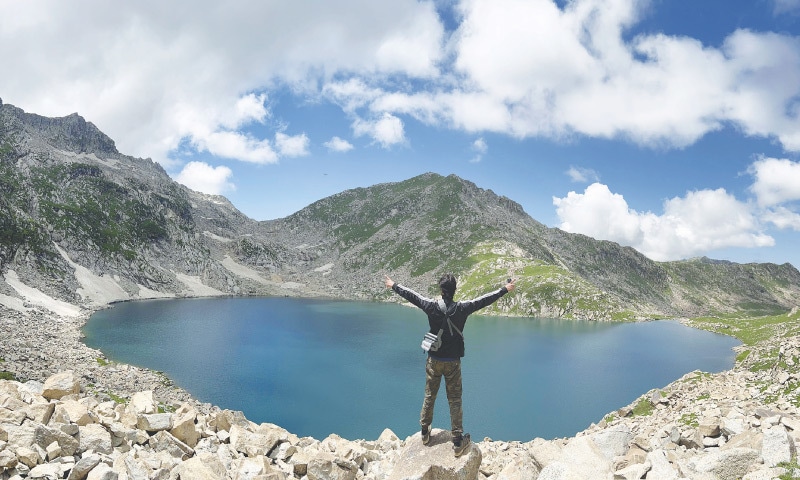Imagine this: You’re perched on a rugged cliff in the Karakoram Range, the wind whispering ancient tales through snow-capped peaks that stretch like nature’s own skyscrapers. That’s the Pakistan I discovered on my first solo backpacking trip back in 2018—a land bursting with raw beauty that left me breathless and begging for more. Fast forward to today, and the World Economic Forum’s latest report is echoing that same thrill on a global stage. Pakistan has surged 20 spots to claim the 101st position out of 119 countries in the 2024 Travel & Tourism Development Index (TTDI). It’s not just numbers; it’s a testament to a nation shaking off old stereotypes and inviting the world to see its true colors. In this deep dive, we’ll unpack what this climb means, why it’s happening, and how it could transform Pakistan’s tourism scene for travelers like you and me.
Understanding the WEF Travel & Tourism Development Index
The Travel & Tourism Development Index, or TTDI, is the World Economic Forum’s go-to yardstick for measuring how ready countries are to nurture sustainable travel and tourism. Launched as an evolution of the older Competitiveness Index, the 2024 edition assesses 119 economies across 17 pillars, from natural wonders to digital infrastructure. It’s like a global report card that highlights not just pretty postcards, but the behind-the-scenes efforts making tourism viable long-term.
Think of it as WEF saying, “Hey, tourism isn’t just about selfies—it’s about smart policies and resilient ecosystems.” For Pakistan, this index spotlights a 3.6% score bump to 3.41 since 2019, signaling real progress amid global recovery from the pandemic. As someone who’s wandered from Lahore’s bustling bazaars to Hunza’s serene valleys, I can attest: This ranking feels like validation for the quiet revolutions happening on the ground.
How the TTDI Measures Success
At its core, the TTDI breaks down into enabling environments—like business ease and safety—and actual resources, such as cultural heritage or air connectivity. Countries score on a 1-7 scale, with top performers excelling in multiple areas. Pakistan’s leap reflects targeted tweaks, but it’s still playing catch-up in spots like health and ICT.
This methodology isn’t abstract; it directly influences where investors pour money and travelers book flights. For low-to-middle-income nations like Pakistan, it’s a roadmap out of economic slumps, emphasizing sustainability over short-term booms.
Pakistan’s Impressive Climb: From the Back of the Pack to Rising Star
Pakistan’s jump from 121st in 2019 to 101st in 2024 isn’t luck—it’s the payoff of deliberate steps by the government and local stakeholders. The score of 3.41 might not scream “top-tier,” but that 20-spot gain outpaces many peers, especially in the Asia-Pacific region where only Bangladesh lags behind at 114th. It’s a story of resilience, much like the resilient people I’ve met in Gilgit-Baltistan, who turn harsh terrains into welcoming havens.
This upward trajectory comes after years of turbulence, including security concerns and the COVID-19 hit. Yet, initiatives like the Pakistan Tourism Development Corporation’s (PTDC) global roadshows have built momentum. Picture this: Just last year, I chatted with a tour operator in Islamabad who credited visa reforms for doubling his bookings—real talk from the front lines.
Key Pillars Behind the Improvement
Pakistan shone in natural and cultural resources, scoring decently on its diverse landscapes from deserts to deltas. Air transport infrastructure also nudged up, thanks to better airport upgrades in major cities. But it’s the policy shifts, like eased visa-on-arrival for 126 countries, that turbocharged the climb.
On the flip side, health and security pillars dragged scores down, though improvements in enabling environments show promise. It’s like Pakistan’s tourism is a young hiker—strong legs for the journey, but still building stamina.
- Natural Resources: Pakistan’s 8,000+ km coastline and Himalayan gems give it a solid base.
- Cultural Heritage: UNESCO sites like Mohenjo-Daro add depth, drawing history buffs.
- Business Environment: Reforms have simplified operations for tourism ventures.
Strengths Fueling Pakistan’s Tourism Momentum
What makes Pakistan tick on the TTDI? It’s the sheer variety that hooks adventurers. From the serene Swat Valley—once dubbed “Switzerland of the East”—to the vibrant festivals in Punjab, the country packs a punch in untapped potential. I’ve lost count of the times friends back home gasped at my photos of Fairy Meadows, wondering why they hadn’t heard of it before.
Humor me here: If tourism were a party, Pakistan would be that underrated guest with killer stories and epic views, finally getting noticed. The 2024 index praises its price competitiveness, making it a budget traveler’s dream compared to pricier neighbors.
Highlighting Natural and Cultural Assets
Pakistan’s geography is a jackpot: Five of the world’s 14 highest peaks, ancient Indus Valley ruins, and biodiversity hotspots like the mangroves of the Indus Delta. Culturally, it’s a melting pot—Sufi shrines in Lahore pulse with qawwali music that stirs the soul.
These assets aren’t just scenic; they’re economic engines. Local communities in Chitral are already weaving eco-tourism into their lives, preserving traditions while earning livelihoods. It’s heartwarming to see, especially after sharing chai with artisans who dream big.
| Attraction Type | Key Examples | TTDI Pillar Impact |
|---|---|---|
| Mountains & Peaks | K2, Nanga Parbat | Natural Resources (High Score) |
| Historical Sites | Taxila, Lahore Fort | Cultural Resources (Moderate) |
| Beaches & Coasts | Gwadar, Hawkes Bay | Leisure Attractions (Improving) |
Challenges Holding Pakistan Back: Room for Growth
Despite the climb, Pakistan’s 101st spot underscores hurdles like infrastructure gaps and safety perceptions. The TTDI flags weak health facilities and limited ICT as weak links, which can scare off cautious tourists. Remember my bumpy jeep ride to Skardu? Thrilling, yes—but smoother roads would make it magical for everyone.
Light-hearted aside: Pakistan’s tourism is like that promising band—great talent, but needs better amps (infrastructure) to rock the global stage. Security has improved, yet media narratives linger, masking the warmth of its people.
Pros and Cons of Pakistan’s Current Tourism Landscape
Pros:
- Affordable adventures that rival anywhere.
- Authentic experiences with minimal crowds.
- Government push via “Visit Pakistan” campaigns.
Cons:
- Seasonal access due to weather extremes.
- Visa processes, though improving, still vary.
- Underdeveloped eco-tourism regulations.
Addressing these could propel Pakistan higher—think upgraded trails in the north or digital booking platforms tailored for internationals.
How Pakistan Stacks Up Regionally: A Comparative View
In South Asia, Pakistan edges out Bangladesh (114th, score 3.13) but trails India (54th, 4.25) and Sri Lanka (78th, 3.80). India’s edge comes from robust air links and marketing, while Pakistan’s natural edge shines brighter in raw adventure metrics. It’s like a family reunion: Siblings competing, but each with unique flavors.
Regionally, Asia-Pacific leaders like Japan (1st globally) dominate with seamless infrastructure. Pakistan’s 3.6% growth since 2019 mirrors trends in peers like Indonesia, hinting at shared recovery paths.
| Country | Global Rank | Score | Key Strength |
|---|---|---|---|
| India | 54 | 4.25 | Cultural Exports |
| Sri Lanka | 78 | 3.80 | Beaches & Heritage |
| Pakistan | 101 | 3.41 | Mountains & Affordability |
| Bangladesh | 114 | 3.13 | Emerging Eco-Sites |
This comparison isn’t about rivalry—it’s inspiration. Pakistan could borrow India’s digital savvy while flaunting its unparalleled peaks.
Economic Ripple Effects and Future Outlook for Pakistani Tourism
Tourism contributes about 5.8% to Pakistan’s GDP, but the TTDI climb could amplify that to double digits with sustained efforts. Jobs in hospitality and guiding are booming, especially post-2022 visa easements that spiked arrivals by 80%. I’ve seen villages in Hunza transform from subsistence farming to homestay hubs—families thriving, kids in school.
Looking ahead, the “Uraan Pakistan” initiative aims for 5 million tourists by 2025, blending adventure with halal tourism. It’s exciting; imagine global nomads flocking to paraglide over Attabad Lake.
Boosting Local Economies Through Tourism
Sustainable models are key: Community-led tours in Kalash Valley preserve culture while funding education. The emotional payoff? Locals beaming with pride, sharing stories over homemade apricot jam.
Yet, equitable growth matters—northern provinces like KPK lead gains, but southern Balochistan needs investment to balance the scales.
Essential Destinations: Where to Experience Pakistan’s Tourism Boom
Craving that next big trip? Pakistan’s rise means now’s the time to explore. Start with the north: Gilgit-Baltistan’s Karakoram Highway is a drive for the ages, winding past glaciers that make Iceland look tame. I still chuckle at my near-miss with a curious yak—pure adrenaline!
For culture vultures, Lahore’s Walled City offers foodie heaven: Spicy nihari at dawn, followed by Badshahi Mosque’s grandeur. Don’t miss the south’s Thar Desert safaris—camel rides under starlit skies that feel otherworldly.
- Northern Pakistan: Hunza for valleys and forts; ideal for trekkers.
- Punjab Heartland: Lahore and Multan for history and cuisine.
- Sindh Adventures: Karachi beaches or Mohenjo-Daro ruins.
- Balochistan Gems: Quetta’s markets and Hingol National Park.
Pro tip: Travel off-season (March-May) for fewer crowds and blooming tulips in Nathiagali.
Best Tools and Resources for Planning Your Pakistan Getaway
Ready to book? For informational seekers, the PTDC website is your first stop—packed with itineraries and updates. Navigational ease: Download the “Pakistan Travel Guide” app for offline maps and cultural tips.
Transactional tools shine here: Use Booking.com for affordable stays in Islamabad hotels, or TripAdvisor for verified Gilgit tours. For visas, the official e-visa portal streamlines applications—I’ve used it twice, hassle-free.
- Apps: Rome2Rio for multi-modal transport; Google Translate for Urdu chats.
- Booking Sites: Agoda for budget guesthouses; Viator for guided hikes.
- Safety Resources: UK FCO travel advice or local SIMs from Jazz for real-time updates.
These make planning feel like chatting with a friend, not wrestling bureaucracy.
People Also Ask: Common Questions on Pakistan’s Tourism Rise
Drawing from real search trends, here’s what folks are buzzing about regarding Pakistan’s WEF climb.
What is the WEF Travel & Tourism Development Index?
The TTDI evaluates countries’ readiness for sustainable tourism across 17 pillars, from infrastructure to environmental policies. Released biennially, the 2024 version covers 119 nations, helping spotlight growth areas like Pakistan’s natural assets.
Why has Pakistan’s tourism ranking improved in 2024?
Visa relaxations, infrastructure upgrades, and marketing campaigns like “Hidden Crescent” have boosted scores. The 20-rank jump reflects better air connectivity and cultural promotion, amid a global post-pandemic rebound.
Which countries rank above Pakistan in the WEF TTDI?
Top spots go to Japan (1st), USA (2nd), and Spain (3rd), excelling in business environments and attractions. In South Asia, India leads at 54th, thanks to its vast heritage sites and connectivity.
How can Pakistan further improve its tourism ranking?
Focus on health infrastructure, digital payments, and security perceptions. Eco-tourism investments in vulnerable areas like the Himalayas could elevate scores, drawing more sustainable travelers.
Is Pakistan safe for tourists in 2025?
Major sites are secure with improved policing, but check advisories for border areas. Millions visit annually without issues—stick to guided tours for peace of mind.
FAQ: Your Burning Questions Answered
What score did Pakistan achieve in the 2024 TTDI?
Pakistan scored 3.41 out of 7, a 3.6% improvement from 2019. This places it ahead of neighbors like Bangladesh but behind regional heavyweights.
How does Pakistan’s ranking compare to 2019?
It climbed from 121st to 101st, driven by policy reforms and global events participation by PTDC. This progress aligns with broader gains in lower-middle-income economies.
What are the best times to visit Pakistan for tourism?
Spring (March-May) for northern blooms or winter (November-February) for milder south. Avoid monsoons in the east; always pack layers for altitude shifts.
Can solo travelers safely explore Pakistan?
Absolutely, especially in tourist hubs like Lahore or Hunza. Join group tours via platforms like Intrepid Travel for added security and local insights—I did, and it was unforgettable.
How is Pakistan promoting sustainable tourism?
Through initiatives like the National Tourism Policy 2020-2030, emphasizing eco-friendly practices in national parks. Community involvement ensures benefits reach locals, preserving sites for generations.
In wrapping up, Pakistan’s ascent in the WEF rankings isn’t just stats—it’s an invitation to witness a nation in bloom. From the peaks that humbled me to the hospitality that warmed my heart, it’s a destination rewriting its narrative. Whether you’re a thrill-seeker or culture curator, pack your bags; the adventure calls. This climb signals brighter days ahead, promising economic vitality and stories worth telling. Let’s hope the next index sees Pakistan soaring even higher—who knows, maybe I’ll bump into you on that Karakoram trail.









Leave a Reply